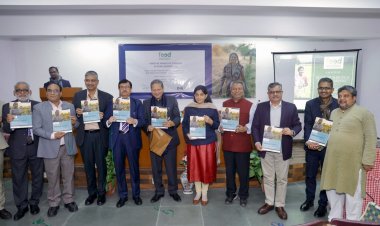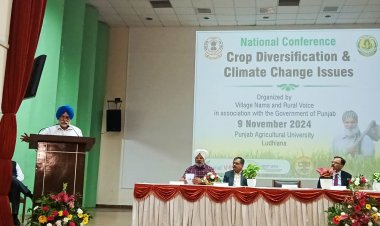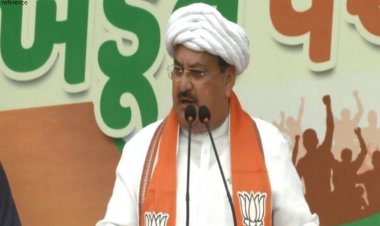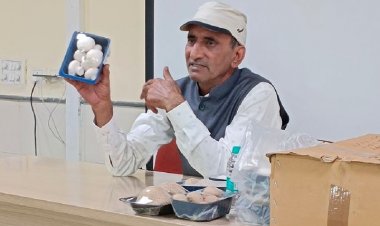Public procurement of wheat to be at 13-year low, may remain lower than old stocks in central pool
According to the government, the public procurement of wheat may end up at about 195 lt in the current RMS (2022-23). As for the production, the government has spoken of a decline of more than 5 per cent. Going by these figures, the public procurement of wheat is likely to remain at the lowest in the last 13 years since RMS 2010-11.
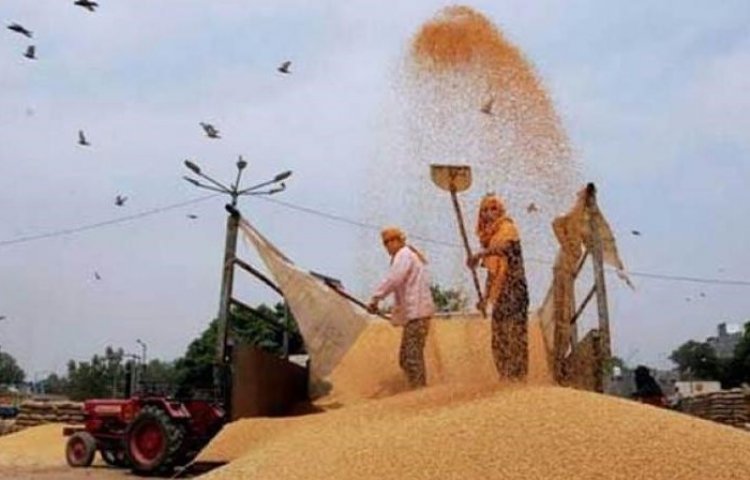
The government has admitted a decline in wheat production and lower public procurement. However, the figures for both of these are still on the higher side and the actual figures may be lower. According to the government, the public procurement of wheat may end up at about 195 lakh tonnes (lt) in the current Rabi Marketing Season (RMS) (2022-23). As for the production, the government has spoken of a decline of more than 5 per cent.
Going by these figures, the public procurement of wheat is likely to remain at its lowest in the last 13 years since RMS 2010-11. If the procurement fails to touch the 190 lt mark, it will be for the first time that the old stocks of wheat in the central pool on April 1 may be more than the quantity of wheat procured in the new season. The stocks of wheat in the central pool stood at 189.90 lt on 1 April 2022. The actual decline in production may be much higher than that estimated by the government.
Union Food Secretary Sudhanshu Pandey said on Wednesday that the public procurement would end up at 195 lt in the current RMS. According to the figures from the Food Corporation of India, this will be the lowest after 2010-11 RMS, when 225.13 lt of wheat had been procured by the government.
Read... Will wheat procurement end up at half the target?
https://eng.ruralvoice.in/national-23/will-wheat-procurement-end-up-at-half-the-target.html
According to the Food Secretary, 175 lt of wheat has been procured by the government so far. Another 20 lt of wheat is expected to be procured in Madhya Pradesh and Uttar Pradesh. Thus, the total procurement is expected to remain at merely 195 lt. But going by the wheat arrivals in the market, this figure looks quite challenging. The public procurement of wheat had been 433.44 lt last year, in view of which the government had fixed the target at 444 lt this year.
RMS wheat procurement for the central pool
2010-11 – 225.13
2011-12 – 283.34
2012-13 – 382.15
2013-14 – 250.72
2014-15 – 281.31
2015-16 – 280.88
2016-17 – 229.61
2017-18 – 308.24
2018-19 – 357.95
2019-20 – 341.32
2020-21 – 389.92
2021-22 – 433.44
2022-23 – 156.92*
Source: FCI, figures in lakh tonnes, * up to 28 April
In fact, the Centre lowered the estimates for total procurement only after the Punjab government decided to conclude wheat procurement. Punjab’s Food, Civil Supplies and Consumer Affairs Minister Lal Chand Kataruchak on Tuesday said that wheat procurement would be concluded in the state in a phased manner starting from May 5. A target of 132 lakh tonnes of wheat procurement had been fixed in the state earlier, but the Food Minister said that only about 93 lt of wheat had been procured till Tuesday.
Read… Punjab to conclude wheat procurement in phased manner from May 5; decision comes in the wake of decline in arrivals
Punjab is no exception. The situation of wheat procurement remains the same in all states. Punjab, Haryana, Madhya Pradesh (MP) and Uttar Pradesh (UP) are the largest contributors to the central pool. According to the FCI figures, 85.69 lt of wheat has been procured in Punjab up to April 28 this year as against 132.22 lt in 2021-22, 32.96 lt in MP as against 128.16 lt last year, 36.93 lt in Haryana as against 84.93 lt, and a mere 1.23 lt in UP as against 56.41 lt. In Rajasthan, only 1,000 tonnes of wheat has been procured up to April 28 this year as against 23.40 lt in 2021-22.
Opening wheat stocks in April
2016 – 145.38
2017 – 80.59
2018 – 132.31
2019 – 169.92
2020 – 247.00
2021 – 273.04
2022 – 189.90
(Source: FCI, figures in lakh tonnes)
Read... Wheat stocks at three-year low in central pool; prices higher than MSP in MP
https://eng.ruralvoice.in/latest-news-24/wheat-stocks-at-three-year-low-in-central-pool.html
The major reason for the lower public procurement is the increase in export demand for wheat. Wheat supply has reduced in the global market due to the Russia–Ukraine war. The demand for wheat from India has gone up due to this. As Food Secretary Pandey said, new markets have opened in Egypt, Turkey and some European Union (EU) countries for wheat exports from India. He said that private traders had entered into export contracts for 40 lt of wheat for the current quarter and of this, 10 lt of wheat had been exported so far. India exported 70 lt of wheat in the financial year 2021-22. The steep decline in public procurement in MP and Rajasthan is primarily because export traders are purchasing more wheat in these states due to their proximity to the Kandla port.
The next reason for less public procurement is the decline in wheat production. Wheat grains shrivelled, especially in the northern states, due to an unusual rise in temperature in March and April. Farmers in most parts of the country say that their production has gone down by 15-25 per cent. However, the government has reduced its wheat production estimates by only 5.7 per cent. The earlier projection for wheat production was 11.13 crore tonnes, which has now been revised downward to 10.5 crore tonnes. Wheat production stood at 10.96 crores in 2020-21.
Read... Govt lowers wheat production estimates by 5.7 per cent; public procurement to be not even half that last year
In fact, the purchase of wheat by the private sector in MP, Rajasthan and UP for export has directly affected the public procurement. But a decline in production is also a major reason for this. MP has an early harvest, so production is not likely to be adversely affected in the state. But according to the information provided by farmers in UP, Haryana and Punjab, the production has been 15-20 per cent less than that last year. The reduced wheat arrivals in the market also corroborate this.
In fact, there has been a decline in production this year after 2004 and 2009 due to the vagaries of weather. In these two earlier years, it was due to droughts that the production had declined. This year, however, the crop has been affected due to the sudden rise in temperature in March and April. Agriculture experts are also relating the decline in production to the shortage of DAP at the time of the sowing of wheat. One cannot deny the possibility of a further decline in the wheat production estimates in the days to come.
The decline in crop production in 2004 had led the government to go for a steep increase in the Minimum Support Price (MSP) of wheat for the next three years, during which it went up from Rs 600 per quintal to Rs 1,000 per quintal in 2007-08. However, the production was good in 2007-08, which benefited the farmers as there was more private procurement. But things are not so good for the farmers this year. It is true that private traders have paid Rs 2,050-Rs 2,300 per quintal to the farmers, but the profits on this count have been more than offset by the losses suffered by the farmers due to the decline in production.
The increase of 40 basis points in the repo rate brought about by the Reserve Bank of India (RBI) on Wednesday is somewhere being linked with the price rise of wheat and other products. One fears that the retail inflation rate in the days to come may be far greater than what the RBI has targeted.



 Join the RuralVoice whatsapp group
Join the RuralVoice whatsapp group



















